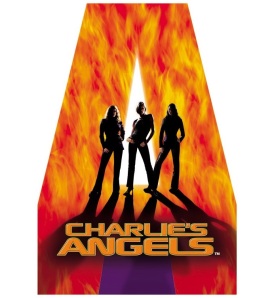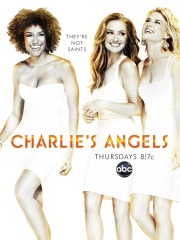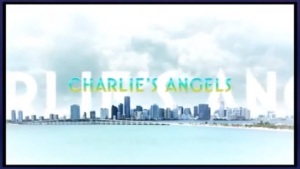 Charlie’s Angels is an iconic piece of pop culture, solidified by both the original ’76-’81 television series and its early 2000s revival as a cinematic franchise. However, it’s been 16 years since the last Angels film and in the interim there was a bungled attempt to reboot the TV series that got cancelled midway through its first season.
Charlie’s Angels is an iconic piece of pop culture, solidified by both the original ’76-’81 television series and its early 2000s revival as a cinematic franchise. However, it’s been 16 years since the last Angels film and in the interim there was a bungled attempt to reboot the TV series that got cancelled midway through its first season.
Nonetheless, 2019 brought a new Angels entry to the big screen. And it immediately flopped. Flopped HARD. After three weeks in release, it’s only pulled in $16 million domestically. (For comparison, the 2000 and 2003 films pulled in $40 million and $37 million, respectively, in just their opening weekends. Ouch.)
Charlie’s Angels (2019) isn’t a bad film, so what went wrong? What made it literally dead on arrival? Let’s dig in and find out. Oh, and if you haven’t seen the film (which, given it’s box office take, is very likely) then: SPOILERS, AHOY!
WHO?
The previous Angels movies set the bar pretty high by having Cameron Diaz, Drew Barrymore and Lucy Lui as its Angels, pretty much requiring that any future Angels be just as high-profile and/or well-liked to get people to buy in. The 2011 reboot series tried going the mostly-unknown route with its Angels and we saw how long that lasted (although it did have a lot of other things working against it as well).
So when the 2019 line-up was announced to be Kristen Stewart, Naomi Scott, and Ella Balinska, well, it didn’t quite set people a-buzz. No disrespect to Ella and Naomi, who are fine in their roles, but when you’re going from “Cameron, Drew, and Lucy Lui” to “K. Stew, a Power Ranger and someone else”, that’s a pretty weak spark to try and fan into a flame.
If they had even cast just one other semi-well known name as an Angel, (like maybe Zendaya or Keke Palmer), it could’ve made a big difference, since people would’ve been able to visualize it more, talk about it more, and build it’s buzz some more.
WHY?
So, why, after all this time, were we getting another “Charlie’s Angels” film? Is it a reboot, a remake, a continuation? On the surface, it’s kinda hard to tell, actually. It’s titled just as the first film was, simply Charlie’s Angels, (the 2003 follow-up was Charlie’s Angels: Full Throttle) which would normally denote it’s a remake/reboot — if not for the recent trend of revived franchises not bothering to differentiate their newest entry from the original, title-wise (see: Shaft, Halloween).
But then there’s the logo – it’s the same logo seen in the previous two films, which would indicate it’s a sequel of sorts (since up to now every iteration of Charlie’s Angels has had it’s own unique logo). And then the initial posters came out and didn’t offer up anything helpful, either. One presented a fist-bumping trio looking down on us from the sky above, the other served up some super-serious deadpan stares alongside an ominous tagline: “Sworn to secrecy, bound by sisterhood”. (WHAT.)
Having an unclear reason for even existing is a pretty big stumbling block, IMHO.
STORY
So, we soon find out that it IS a continuation of the original series and film universe, but then that’s about it for anything that’s recognizably Charlie’s Angels-esque. Sometime in the past 16 years, the Townsend Agency has gone from a high-end security and private investigation firm to a global espionage operation, complete with international HQs, weapons facilities, safe houses and many, many Angel agents (not to mention multiple Bosleys, including director/writer Elizabeth Banks).
Well, it’s great that the Townsend Agency was able to successfully expand it operations, but this kind of leap takes away what was unique about Charlie’s Angels and turns it into a watered-down version of the 007, Mission: Impossible, or any other spy franchise. So, aside from a few brief nods to Angels history, there’s nothing remaining of the old Angels world to draw in the longtime fans and nothing distinctive about the current Angels world for new viewers. So for the most part, it plays to both audiences as generic spy action thriller. Which also leads to another problem…
BRAND
The more serious tone of the global spy game setting comes with amped-up violence. These Angels love their firearms and don’t hesitate to kill instead of disarming or disabling. And this pulls them away from the familiar Angels-style of action, which was always borderline-believable, just shy of being campy, and vicariously enjoyable. The new Angels do get up to a few fun moments with some disguise work that harkens to Angels adventures-past, but for the most part it’s straight-up fists-and-firearms.
But perhaps most damaging is that because of this new direction, for the first time we don’t get a Charlie’s Angels that opens with a voiceover from Charlie introducing us to the three little girls/young women he hand-picked to become his crime-fighting trio, with a montage of each Angel set against her signature silhouette, culminating in a group action pose (preferably against a fiery background). And that, my friends, is a deal-breaker.

When your movie’s tie-in mobile game’s loading screen does a better job representing the franchise brand than your actual movie poster, it’s not a good sign
THE BIG PICTURE
There were also problems with the film itself – a lot of scenes and line deliveries fell flat (although props to K. Stew, because she really does shine in her role), some cuts seemed to come too soon (and others, not soon enough) and there were a few really glaring plot holes.
But what was really upsetting was (again, SPOILER ALERT) that at the very end of the film we’re given a two minute epilogue sequence that shows new girl Naomi Scott going through boot camp training to be come an official Angel. Suddenly, here we have tongue-in-check cameos from the likes of Danica Patrick, Rhonda Rousey, and Laverne Cox as instructors, Hailee Steinfeld and Lili Rineheart popping up as over-excited fellow trainees, a one-off reference to Ruth Bader Ginsburg being a certified Angel and the best of all, the reveal that OG Angel Kelly Garret (Jaclyn Smith) is the new “Charlie”! WHY WAS THIS NOT THE WHOLE MOVIE.
And that pretty much sums the problem with Charlie’s Angels (2019) and why possibly failed to entice movie-goers. It’s not a bad film, it’s just very obviously not a “Charlie’s Angels” film.









